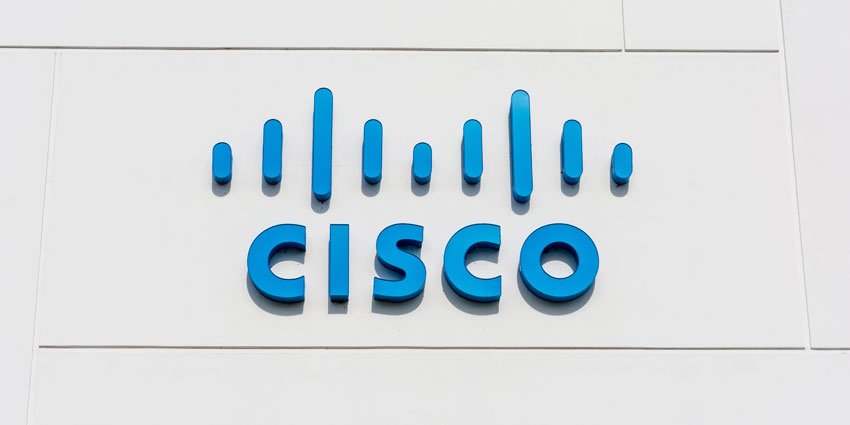When done well, self-service speeds up issue resolution, drives engagement, and raises customer satisfaction, conversions, and revenue.
Indeed, it is much more than call deflection. Self-service empowers customers with easy access to answers and advice, deepening relationships with the business.
However, it is not always done well. Dead-ends within self-service portals, knowledge base gaps, and cumbersome chatbots are just a handful of the many terrible practices that plague the space.
Fortunately, our expert panelists have experience navigating the tricky terrain. In this edition of the CX Today roundtable series, they highlight how self-service is evolving and reveal the most exciting innovations enhancing the technology.
This month, our panelists include:
- Michele Carlson, Senior Product Marketing Manager at NICE, and Jonathan Wax, VICE President of NICE Nexidia EMEA.
- Jay Gupta, Director of Product Marketing at Talkdesk
- Jennifer Sewell, Director of Product Marketing at Ada
- Neil Titcomb, Managing Director UK&I at Odigo
- Vincent Tachet, Group CIO at Webhelp
- Tom Bailey, VP International at Khoros
Below, they share specialist insights while answering a whole host of questions that cover several critical talking points within the self-service arena.
How Has the Self-Service Landscape Progressed In the Past Five Years?
Carlson: In the digital-first age of on-demand services, customers increasingly expect “instant gratification”. Customers prefer brands that can provide 24/7 support and frictionless, effortless service. The current generation of self-service solutions focuses on achieving these aims, not the simple cost reduction of earlier generation self-service options.
As customer service transitions from multichannel to omnichannel, customers want to interact with companies on their channels of choice – chat, email, SMS, and social media – not just by phone.
Organizations must seamlessly blend digital channels and voice to allow customers to move effortlessly between them – with access to their entire relationship history.
Indeed, self-service is eclipsing voice as the preferred first point of service, marking a sea change in the role of these applications.
Gupta: The self-service landscape is evolving at a quickening pace. Indeed, Talkdesk research recently revealed that 60 percent of organizations have applied AI to their customer self-service.
The rise of natural language processing (NLP) driven by digital voice assistants, like Siri and Alexa, has also helped the contact center move beyond traditional chatbots to AI-powered virtual agents.
Increasingly innovative AI techniques are further expanding the capabilities of these virtual agents. For example, with just a few words from a user, they can detect sentiment and intent, determining if they should try to resolve the query or route the contact to human support.
Such use cases have positioned AI-powered virtual agents as one of the most transformative contact center tools, and they’re fast becoming a preferred choice of younger generations.
Sewell: Self-service innovations in the D2C space, which rose in prominence due to the pandemic, have opened people’s eyes to the possibility of quicker, more personalized service.
Yet, the B2B space still trails behind. Ever-evolving buyer expectations are putting pressure on B2B sellers to revaluate how they go to market — from their target customers to the channels they offer support.
After all, the post-pandemic B2B customer wants minimal human intervention when evaluating, first experiencing value, or purchasing a product/service. The end consumer is looking for fewer face-to-face, transactional experiences.
Whether it sells directly or indirectly, online or offline, every B2B business is on the path to becoming a digital business. And like all digital businesses, sellers must compete with a customer experience set by leading consumer brands and emerging B2B marketplaces.
New forms of digital customer engagement — like SMS, marketplaces, voice, and social channels – are transforming B2B businesses, empowering them to rethink how to build a more agile platform that moves with customers and meets them where they are.
Self-service used to be a differentiator; today, it is becoming table stakes, particularly in the age of product-led growth (PLG).
Titcomb: The Covid-19 lockdowns exaggerated many CX problems of those who have not invested properly, causing customers to wait longer for responses.
Self-service has helped, but so far, many are only testing the water, investing in pockets of innovation.
Indeed, the technology has the potential to eradicate the menu-based response system currently used, enabling customer issues to be resolved without speaking to agents. This successfully employs a deflection strategy, saving brands money as AI does the job an agent would.
Nevertheless, today’s customers are still queuing and going through menus in a very impersonal way. Such was the case 10-15 years ago, and the same inefficiencies in the unstructured and unsophisticated self-service process lie bare for all to see.
Of course, the industry has made some progress, thanks – in part – to natural language processing (NLP). Today, NLP is more real-time, intuitive, and accurate. It allows processes to act on what people are saying to create an intelligent way of directing customers.
Tachet: Initially, self-service comprised of consumers visiting a website and being directed to a list of frequently asked questions (FAQs) that they didn’t want to read, which made finding the correct answer a challenge.
Today, CX leaders see the most success in self-service through adopting customer-centered design. It is not enough to publish FAQs on a website and expect this to reduce contact center demand significantly. The most effective self-service combines both information and guidance for the customer with a powerful transactional capability, which can resolve an issue for the customer without the need for human support.
Additionally, the rapid evolution of AI in self-service is helping to understand the job customers wish to complete while integrating systems through APIs and process automation tools.
In doing so, customers receive better guidance, information, and support. They may also interact with back-office systems and CRM to execute a transaction on their behalf.
Bailey: Now more than ever, customers want authentic brand interactions, but on their own terms. As a result, the importance of communities is increasing, not only as a means for brands to empower customer independence but also as a tool for continuous improvement.
Indeed, online communities are an excellent way to deliver that self-service support. AI-driven chatbots within a community can also help guide users to the best forums and answer frequent questions.
Customers should feel empowered to find and source the information they need while knowing they can access further support if required.
Moreover, 75% of consumers valued interactions they had with peers in a brand’s online community – as per a Forrester study commissioned by Khoros.
As a result, today’s communities seem to go beyond building brand and customer rapport – they are about fostering conversation and creating lasting brand champions.
In Your Opinion, What Has Been the Most Exciting Recent Innovation in the Self-Service Space?
Wax: Artificial Intelligence! The widespread implementation of AI is transforming self-service.
First off, AI in self-service enables businesses to use data to drive more effective self-service, a primary consumer demand.

According to NICE’s 2022 Digital-First Customer Experience Report, 81 percent of consumers are demanding more effective self-service channels from businesses. Moreover, 34 percent of consumers request that brands offer smarter self-service capabilities.
AI is the answer – leveling up self-service to meet customers’ expectations by leveraging real-time interaction data to hyper-personalize every self-service experience.
Gupta: Intent detection enables self-service tools to automatically classify written or spoken text based on what the user wants to achieve.
For instance, a virtual agent could detect if a user wants to check their shipping status. Following the identification of this intent, it could then automate the delivery of the correct answer.
Sentiment detection can also determine a customer’s overall emotional state during an interaction, rating it as positive, negative, neutral, or mixed. Such a technique gives contact center leaders insight into what topics cause frustration, highlighting opportunities for improvement.
These game-changing capabilities enable contact center agents to be free of time-consuming and repetitive tasks, so they can focus on complex queries that require problem-solving and human judgment.
Sewell: Many associate self-service with self-checkout kiosks at stores and airports, self-order QR codes at restaurants, and IoT-enabled smart fridges in malls. In other words, D2C.
While these innovations recently gained traction, the pandemic played a critical role in the accelerated demand for automated, online self-service.
No-code/low-code platforms make it so non-technical CX teams can build and maintain workflows leading to more meaningful experiences. After all, they understand customers the best.
NLU and AI technologies also empower brands to recognize and translate common speech patterns quicker, leading to more personalized and timely bot-driven experiences.
The API or application economy has made it easier than ever to play with these applications. Indeed, there is an API for just about anything, allowing many businesses to easily plug into another tool and offer customized experiences without straying away from what they do best.
Titcomb: Natural language technologies incorporate AI to assess and understand the human word. Automation technologies then act on this understanding, routing customers automatically without using menus or automatic virtual queuing processes.
The technology has the potential to eradicate the menu-based response system currently used, even passing contacts through to bots and enabling specific customer issues to be resolved without speaking to an agent.
Such a deflection strategy saves brands on costs, as the AI does the job an agent would do. But for customers, this isn’t a one–size–fits–all program. And while it is beneficial to those who loathed the process of queuing, if self-service isn’t put into place correctly, it can cause a strain on the relationship between businesses and customers.
Tachet: An increasing number of companies are deploying bots successfully across numerous convenient customer engagement channels, such as mobile applications and messaging platforms.
Done well, they provide access to 24/7 customer support via a mobile device, reflecting the modern, always-on, digitally connected world.
Today, AI capabilities within mobile devices and bots are highly sophisticated. When designed well, they can facilitate more positive experiences.
There is also the emergence of conversational applications combining the best visual features of well-designed mobile apps and websites with the natural language processing (NLP) capability of chatbots. These combine to deliver a user experience with engaging rich media and content.
Although hidden to consumers, AI can also offer reliable transformer models that, combined with NLP, significantly improve CX.
Bailey: The growth of personalization tactics, alongside intelligent technology like AI and machine learning (ML), are incredibly exciting innovations.
After all, today’s customers value interactive experiences when engaging with a brand, and the most successful are those that excel at delivering personalized interactions across all channels.
Automation capabilities like AI and ML help power comprehensive analyses and unveil how customers feel while helping prompt feedback to combat friction at the source.
In addition, many brands have enjoyed success in leveraging asynchronous messaging to promote communication flexibility with customers.
These advanced capabilities enable brands to gather insights and data to inform how to personalize interactions or flag areas of improvement. The future of self-service should start and end with your customers’ best interests top of mind.
How Can CX Teams Monitor and Enhance the Performance of Self-Service Applications?
Wax: Effective self-service begins before consumers reach out, and the capabilities to deliver proactive experiences already exist.
These same capabilities are also critical in the ongoing maintenance of the self-service applications.
Today, AI-enabled, proactive self-service capabilities predict points of friction on the web and across mobile journeys. Once identified, these solutions provide contextual guidance without human assistance for accelerated self-service success on digital channels.
One such example includes contextual ‘nudges’ via pop-ups with timely and relevant data on the page to help when customers struggle. This accelerates online conversions and resolutions, driving e-commerce conversions and reducing support costs.
Gupta: CX teams can monitor and enhance self-service applications in-house using no-code, human-in-the-loop training tools. These enable non-technical staff to maintain and customize the AI models powering self-service tools.
Reducing the dependency on data scientists, companies can become more autonomous, leveraging the organization’s internal subject matter experts – agents and supervisors – to embed their knowledge into AI applications.
Indeed, 44 percent of the CX professionals surveyed by Talkdesk already recognize that agents have the skills necessary to leverage AI tools.
In the future, this will likely grow as agents ensure self-service applications continue to deliver accurate and relevant answers, automating contacts cost-efficiently.
Sewell: To offer a seamless self-service experience, all departments must work in an orchestrated symphony towards a collective goal.
The self-serve motion should apply to the entire customer life cycle – from marketing and sales to customer support and finance.
Success metrics to measure this service strategy include:
- Net Promoter Score (NPS) – How do customers feel after interacting with a brand and experiencing its self-serve?
- Customer Effort Score (CES) – How much effort does a customer need to exert to use self-service?
- Bounce Rate – Are customers engaging with self-service tools and then escalating their issue to human support?
- Conversion Ratio – Are existing customers using self-service or engaging with an agent?
- Time to Resolution – Are particular self-service journeys taking longer than expected to complete?
Just remember: the best customer experiences connect customers to the right answer, resolution, or person, at the right time and in the channel of their choice.
Titcomb: Self-service applications are not plug-in, turn on and see what happens technologies. For CX teams to enhance self-service performance, they must continuously monitor outcomes.
Real-time access to data allows for this most efficiently. Companies can analyze valuable data such as abandonment rates, opinion polling, and surveys to tweak and adjust methods for each customer, which – in turn – can then train CX teams to communicate accordingly.
Self-service AI tools continue learning how to personalize experiences for customers. For example, due to a lack of time, the AI may reveal that specific demographics prefer a particular self-service method, such as in-app or live chats, over voicebot-driven self-service.
Overall, proof of concept is the best route to enhance services and tests, helping brands avoid the risk of ruining reputations.
Tachet: It is critical to assess the traffic individual customer contact reasons drive in the contact center and whether that is rising or falling. Doing so is an excellent measure of self-service success.
Analytics is powerful here, but it is also vital to have human CX teams monitoring customer questions and the answers provided by bots.
The queries self-service solutions can conquer are the same as the conversations frontline CX teams have with customers daily. As such, agents are better qualified than anyone else to train and supervise the effectiveness of self-service solutions.
In line with this trend, more organizations will likely adopt DevOps Models for self-service technology where product development and operational deployment sit side-by-side in multi-skilled, agile teams.
Finally, remember that self-service solutions must not become “publish and forget” applications. They require continuous supervision and improvement, just like the broader service ecosystem.
Bailey: Customers want a solution. Many people look for self-service options to solve their problems before engaging with a brand directly. Building a single space for customers that incorporates FAQ pages, status lookup portals, and forums with questions and answers helps to create a brand-owned community that keeps the wheels turning.
Such an approach also encourages customers to share their insights and experiences to help others.
However, those answers might change over time, so keeping content updated is crucial. Consequently, brands must make sure community managers monitor their community platform properly, so customers get the help they need when they need it.
One way to keep that content updated is to gather all customer interactions in one place, using a contextual classification system.
Consider product names, regional differences, customer slang, and abbreviations for products and services. Customers use all of this language when talking to or about a brand.
Take that language and incorporate it into chatbot responses, FAQs, and resource pages to offer improved customer experiences.
What Does the Future Hold for Self-Service in CX?
Carlson: NICE research reveals that 81 percent of consumers want more self-service options, and 95 percent of companies reported growth in customer self-service requests in 2021.
Yet, only 15 percent of consumers expressed high satisfaction with the tools provided to them. 57 percent also indicated they would leave a brand after only one or two negative experiences.
Such statistics hint toward the lofty expectations of modern customers for seamless, instant experiences at whatever touchpoint they choose.

To meet these great expectations, contact centers must deliver efficiency and satisfaction at pace and scale through next-gen personalized experiences—from self-service to prepared agents.
This thinking is the future, with conversational AI-powered smart self-service also a critical ingredient in the CX mix. The technology will pave the way for frictionless self-service journeys that help consumers resolve their needs before brands even know they exist.
Gupta: With an annual agent turnover rate between 45% and 80%, self-service is more of a necessity than ever before.

These technologies are improving turnover by reducing the quantity of time-consuming, repetitive tasks that fall to agents, allowing them to focus on more purposeful work.
At the same time, self-service capabilities provide better support for expanding global customer bases, efficiently addressing queries in different time zones and languages.
The Talkdesk vision for the future of CX places AI-powered virtual agents firmly at the heart of self-service, catering to the needs of both the employees and customers.
Sewell: It’s just at the beginning. The CX market will consolidate, technologies will evolve at a pace never seen before, and the expectations of modern autonomous customers will grow.
Every company will become digital-first, making self-service table stakes.
Leveraging a combination of advanced conversational AI technologies, including natural language understanding (NLU) and deep neural networks, self-serve will become more intelligent, personalized, and always on.

The best customer experiences will be built with the customer in mind, seamlessly allowing users to shift from an offline channel to SMS, voice, and digital channels. Here, virtual agents will effortlessly pick up where the conversation started.
These experiences will include a seamless escalation process, routing to an agent with the right skillset, and then providing that agent the full context of the previous self-serve conversation, alongside other relevant customer insights.

Titcomb: The future of self-service in CX centers on advancements in voice-based AI. But while voice-driven AI needs much more investment, the industry must also focus on improvements that do not come to agents’ detriment.
Considering that people are time-poor and the world is now a 24/7 society, self-service will move more to web chatbots or in-app chats. However, customers still want to talk on the telephone and that will not go away any time soon.
In the future, companies will still need people to ensure self-service delivers personalized responses to customers. Indeed, true self-service understands its audience and offers a more unified experience across all channels.
Tachet: In the future, customer service will shift from a reactive function and responding to customer-initiated requests, to proactive and anticipating their needs and questions before they arise.
The ability for machine learning to consume and process massive quantities of data to create algorithms that predict the next best action for a customer relationship will transform the nature of CX.
Developments in user technology, such as VR and the metaverse, will deepen this data pool further. As will data collected via smart devices and video, thanks to sophisticated image and gesture recognition capabilities.

On the video front, videobots may also become the next frontier of self-service, as customers ask home assistants questions such as: “Alexa, can you book me a restaurant for three people tomorrow?” The assistant may then do so. This is a future where bots interact with bots.
Yet, what the future may hold, design of the customer journey and UX design is crucial. In today’s world economy, CX is a global sport. The winners are the brands that can leverage the ability to design and combine different components and competencies to make it efficient and on-brand.
Bailey: If a business isn’t set up to best utilize self-service, no amount of money will fix it. CX leaders must refocus the company.
Many executives still say: “That’s how we’ve always done it.” That is what the Blockbuster executives said, too.
Remember, if customers don’t want to engage, it’s a big problem for a business in the age of the modern, autonomous customer.
The pandemic forced the hand of many to focus on digital solutions in ways few were ready for. A terrifying moment for many, but the brands that have adapted are set up for an exciting future.
Expect more immersive self-service elements, like fully operable dressing rooms to try clothing and beauty essentials before buying, gamification of products to build user profiles, and interactive tutorials for frequent queries.

More tailored brand loyalty rewards are also likely, from exclusive event invitations to perks for answering questions in the community.
Finally, remember to treat customers as they want, as individuals with unique interests and problems. Offer the right solutions at the right time, and businesses will thrive.
Miss out on last month’s roundtable? Check it out here: Enabling Awesome CX in CRM







